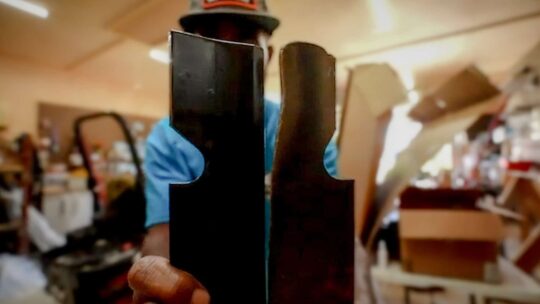Before he became one of professional fishing’s biggest stars, Brian Latimer spent years working in his family’s landscaping business. And, he continues to put his on-lawn skills to good use around his home. In this video, Latimer shares how to choose the sod that’s right for your lawn’s unique circumstances.
What is Sod?
Before you choose the sod that’s right for your yard, it’s good to know what sod is. Simply put, sod is a type of turf grass. More specifically, it’s a layer of grass held together by its root system and a bit of soil. Common turf grass types include Bermuda, fescue and Zoysia, just to name a few.
How is Sod Made?
Sod is actually grown on a sod farm. Seed is simply laid and, once grass has taken root and then been harvested, it will continue to grow back. Latimer explains that it’s a lot like the hair on your head in that, when cut, it keeps growing back. Generally, you can get about 10 years’ worth of grass out of one field of sod. When harvested, sod is usually cut into large pieces and then rolled up to transport.
How do You Choose the Right Sod for Your Property?
When choosing the right sod, there are a few things to take into consideration, explains Latimer. First, you need to evaluate how much sunlight the area gets where you’re placing the sod. Next, you’ll need to evaluate the type of soil you have. And, finally, determine how much time you have, or want, to spend maintaining your yard. For instance, if you don’t have a lot of time or you’d rather be fishing than maintaining your lawn, Latimer suggests going with a warm-season grass like zoysia or Bermuda. These grasses, he says, tend to go dormant in the winter, requiring less overall maintenance. But, he cautions that these types of grasses are more susceptible to weeds than cooler-season grasses.
If you don’t mind fertilizing and mowing regularly, Latimer suggests choosing a cool-season sod, like fescue. Everyone loves fescue, says Latimer, because it’s easier and less expensive to establish than other types of grass. It also looks great throughout the winter and attracts fewer weeds than warm-season varieties. Where maintenance is concerned, however, cool-season grasses will require annual overseeding.
Whatever type of sod you choose, Latimer notes that another great reason to sod your yard is to help mitigate erosion. Once you grade, add soil and sod, you won’t have to worry about it washing away after a big rainstorm. That’s it! Now that you have all the considerations laid out before you, all you have left to do is choose the right sod for your lawn. Your yard will soon be the envy of the neighborhood.



